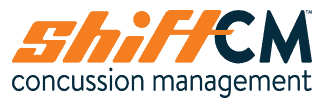What is Sciatica?
Sciatica refers to pain associated with the sciatic nerve, the largest nerve in the human body. It originates in the low back and travels through the buttock down the back of each leg and to the foot. It supplies sensation to the skin of the leg and foot as well as many muscles of the leg and foot.<
It is estimated that sciatica accounts for 5-10% of lower back pain cases making this a very common condition.
What Causes Sciatica?
Any condition that compromises the function of the sciatic nerve can result in sciatica. The most common causes of sciatica include:
Lumbar Disc Herniation:
As we age, our spinal discs tend to lose water content (this is called disc degeneration). This can predispose our discs to injury from mechanical strain, such as heavy lifting or repetitive twisting and bending. As a result, a spinal disc may develop tears in its outer layers, causing the disc’s inner substance to protrude into the spinal canal. If the herniated disc places undue pressure on the spinal nerves, particularly the nerves that make up the sciatic nerve, the patient will experience sciatica.
Lumbar Spinal Stenosis
Lumbar spinal stenosis is a condition in which the spinal canal and intervertebral spaces are narrowed due to osteoarthritis. The narrowing of these spaces may place mechanical pressure on the spinal cord and spinal nerves of the low back, causing irritation of the fibres that make up the sciatic nerve.
Piriformis Syndrome
The piriformis muscle is located in the buttock region and assists in external rotation of the hip joint. When this muscle is injured due to trauma or repetitive use, spasm and swelling may cause it to compress the sciatic nerve, which runs just underneath it.
What are the Symptoms of Sciatica?
Symptoms of sciatica may include:
- Low back pain that travels down the buttock and back of the leg
- Leg pain may also occur without low back pain in some cases
- Numbness or tingling in the leg or foot
- Muscle weakness in the leg or foot
- Increased pain when sitting for prolonged periods
- Increased pain when coughing and sneezing
- Sharp or “electrical” pain in the back and leg
How Is Sciatica Treated?
The vast majority of sciatica cases can be managed with rehabilitation alone and do not require surgery. Our practitioners tailor their treatment strategy to the individual needs of the patient, and these treatment methods largely depend on the cause of the sciatic symptoms. Occasionally, imaging methods (X-ray, MRI) are required to verify the cause of the sciatica, if it’s not readily apparent during physical examination.
Sciatica patients may benefit from a combination of treatment methods including:
- Acupuncture to reduce pain and promote better overall function
- Joint mobilization and manipulation procedures
- Gentle stretching and myofascial release
- Active rehabilitation exercises to promote better muscular function and support around the lumbar spine
- Nerve mobilization techniques to improve sciatic nerve function and mobility
At Shift Rehabilitation, our healthcare providers take a team approach. Depending on the cause and severity of your sciatica, your practitioner may recommend an interdisciplinary approach to treatment, such as combining chiropractic care with physiotherapy.
A combination of therapies can maximize recovery and prevent recurrence of symptoms. As an example: if poor strength and muscular stabilization around your low back was determined to play a role in the development of sciatica, your practitioner may recommend a visit to the athletic therapist at the end of your treatment plan. Athletic therapists can provide instruction and education around exercises that will help prevent another episode in the future!
Do you have sciatica? Call us today at (519) 822-2226 or email us to start getting treatment.


Leave a Reply